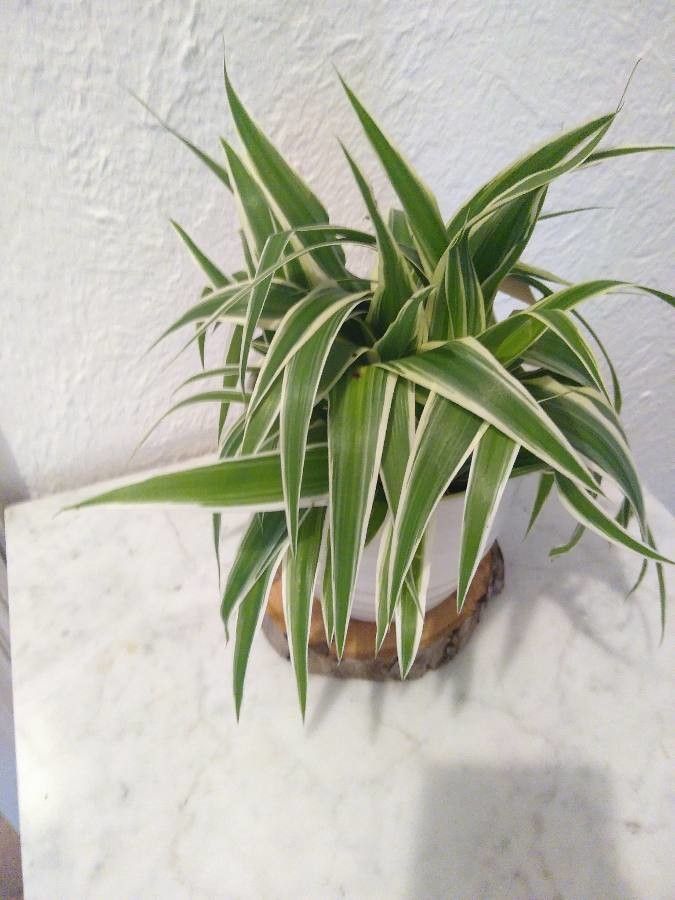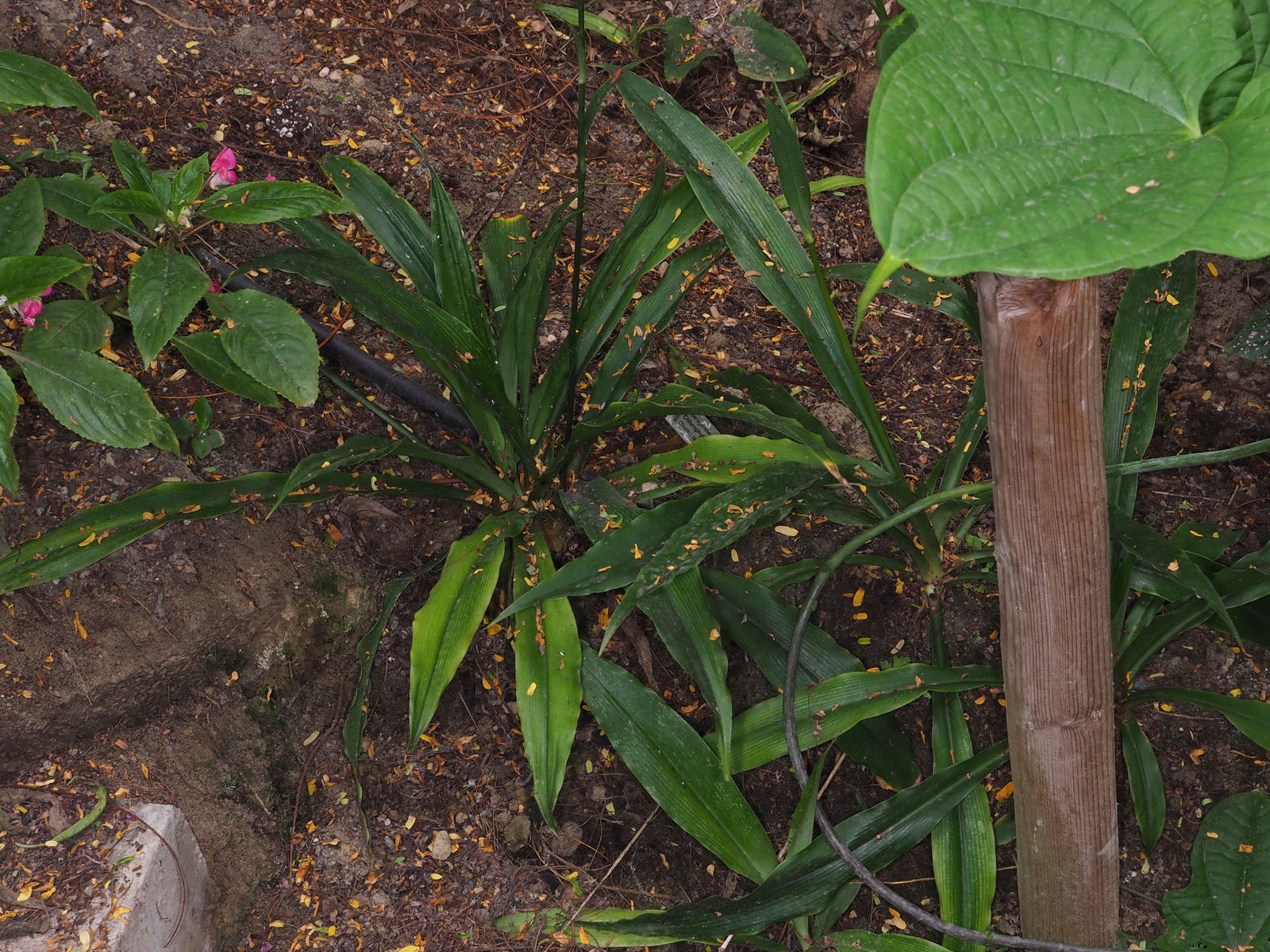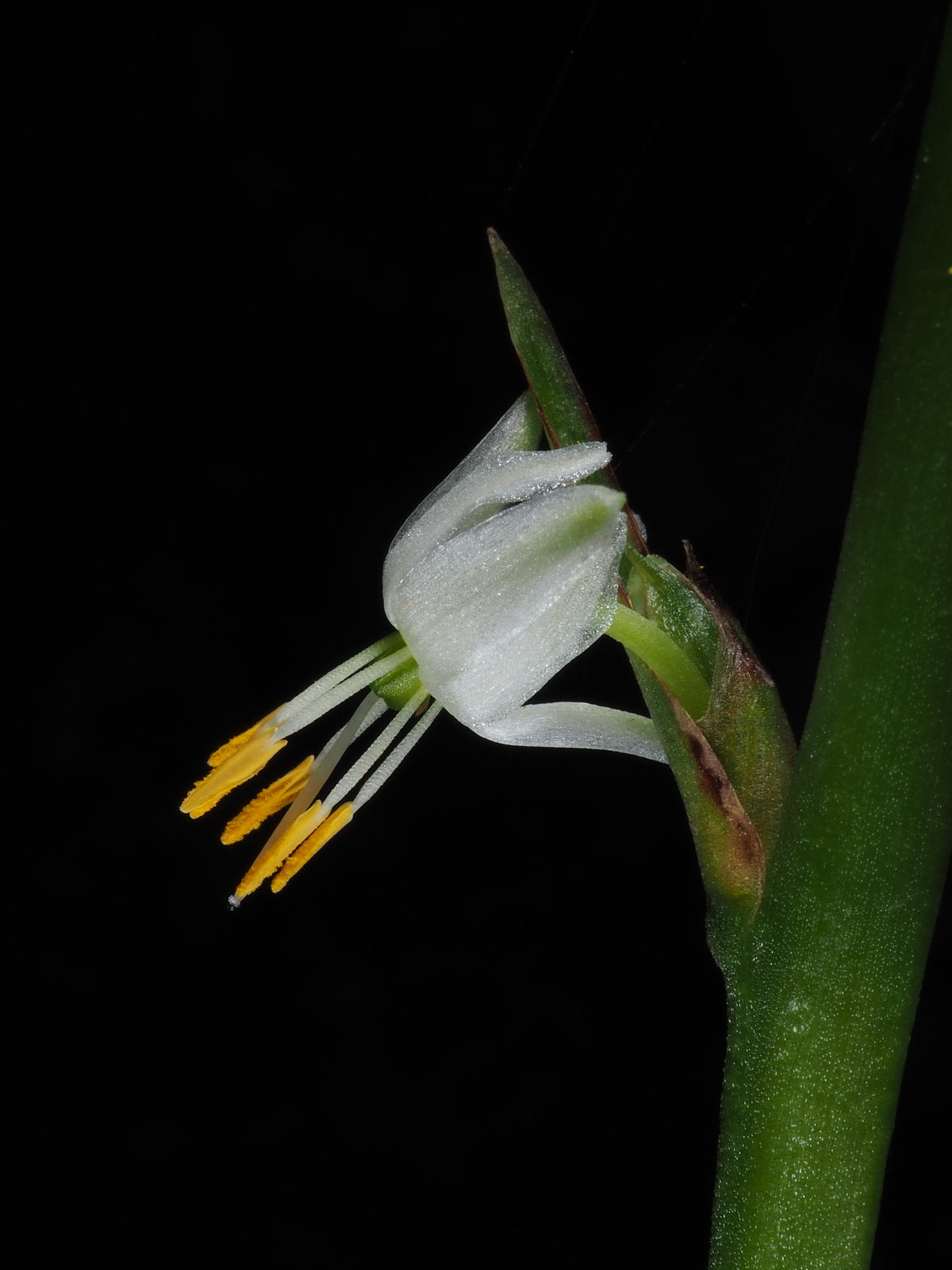Spider Plant
chlorophytum comosum
Also known as: ["Spider Ivy","St. Bernard's Lily","Airplane Plant"]
Overview
A popular, easy-care indoor plant with arching, variegated leaves and small white flowers that produce plantlets at the tips of long stems.
Benefits & Perks
["air purifying","low maintenance","fast growing","aesthetic foliage","wildlife attractant (bees, butterflies, birds)"]
Botanical Classification
| Phylum: | Magnoliophyta |
| Class: | Liliopsida |
| Order: | Asparagales |
| Family: | Asparagaceae |
| Genus: | Chlorophytum |
| Botanical Name: | Chlorophytum comosum |
Plant Characteristics
Basic Information
- Category: Leaf Plants
- Suitable Location: indoor pot in bright, indirect light
- Suitable For:
- Is Weed: No
- Allergenicity: low
Environmental Needs
- Climate: {"temperatureRange":"13–27°C"}
- Hardiness: {"zones":"9–11"}
- Misting: rarely required, only if ambient humidity is very low
- Drainage: Fast-draining to prevent waterlogging.
- Soil Type: Well-draining potting mix with perlite or sand for aeration.
Maintenance Level
- Maintenance Level: very low
- Toughness Level: high
- Pruning Frequency: As needed; typically every few months or when dead leaves appear.
- Pruning Intensity: Light pruning; remove only damaged or unsightly foliage.
Care Details
Ideal Sunlight Coverage:
Bright indirect light for 6–8 hours/day; tolerates lower light but grows slower.
Sunlight Tolerance Tips:
Acclimate to brighter light gradually; avoid direct sun to prevent leaf burn; adjust placement based on light intensity.
Care Requirements
Care Difficulty
very easyeasy
Sunlight
bright indirect light, tolerates partial shade
Rotate plant monthly for even growth; use sheer curtains to filter direct light; move to brighter spot in winter.
Watering
every 7–10 days, allowing soil to dry slightly between waterings
Allow soil to dry partially between waterings; avoid overwatering; ensure good drainage.
Soil
well-draining potting mix with added perlite or sand
pH: Slightly acidic to neutral (pH 6.0–7.0).
Ensure pots have drainage holes; avoid heavy clay soils; refresh soil every 2–3 years.
Temperature
Ideal range 60–80°F (15–27°C); prefers consistent temperatures, avoiding drafts.
Avoid placing near vents or windows with extreme temperatures; maintain stable conditions; monitor for stress signs.
Fertilizing
every 4–6 weeks during spring and summer, none in fall and winter
Dilute fertilizer to prevent burn; fertilize only when actively growing; flush soil occasionally to prevent salt buildup.
Propagation
Methods
Stem cuttings (runners) with nodes; division of clumps is also effective.
Step-by-Step Propagation Guide
- Select healthy runner.
- Cut below node.
- Plant in medium or place in water.
- Maintain moisture and warmth.
Best Time: Spring or early summer when plant is actively growing.
Environment
Warm, humid environment with indirect light.
Medium
Well-draining mix like perlite and peat moss or water propagation.
Hormone
Optional but can speed up rooting.
Timeline
Roots in 2–4 weeks; establish in new pot within 1–2 months.
Tools Needed
Sharp scissors, rooting hormone (optional), small pots or jars.
Quick Tips
Use runners with established roots for faster propagation; keep soil consistently moist but not waterlogged.
Pruning & Repotting
Pruning Guide
Method
Snip leaves at the base with clean cuts; trim runners if they become too long.
Pruning Plan
Remove yellow or dead leaves to maintain appearance and health; encourage fuller growth.
Tools
Clean scissors or pruning shears.
Checklist
Inspect for dead leaves; use clean tools; cut close to stem; dispose of clippings.
Repotting Guide
Best Season
Spring, before active growth begins.
Pot Size
Choose a pot 1–2 inches larger in diameter than the current one.
Method
Remove plant gently; trim roots if necessary; place in new pot with fresh soil; water lightly.
Suggestions
Repot every 2–3 years or when roots fill the pot; promotes growth and prevents root binding.
Checklist
Check root health; prepare new pot with drainage; use fresh soil mix; water after repotting.
Advanced Care Tips
Watering Mastery
Watering Checklist
Check soil moisture; water deeply; ensure drainage; adjust for season.
How to Apply Water Properly
Water deeply until it drains from the bottom, ensuring root zone saturation; avoid wetting foliage; water in the morning for optimal absorption.
Watering Schedule Tips
Water thoroughly when the top 1–2 inches of soil are dry; reduce frequency in winter to prevent root rot.
Soil Improvement
Add perlite or coarse sand to improve drainage; incorporate organic matter for fertility.
Temperature Stress Management
Signs of Temperature Issues
Yellowing leaves (cold stress); brown leaf tips (heat stress); stunted growth.
Cold Stress
Slows growth; may cause leaf discoloration or wilting; roots become susceptible to rot.
Solution: Move to a warmer location; insulate from drafts; reduce watering in cold conditions.
Hot Stress
Leaf scorch; wilting despite moist soil; reduced vigor and flowering.
Solution: Provide shade; increase humidity; ensure adequate water without overwatering.
Fertilizing Guide
Fertilizing Checklist
Check growth phase; dilute fertilizer; apply to moist soil; avoid foliage contact.
Fertilizing Method
Use balanced liquid fertilizer diluted to half strength every 4–6 weeks during growing season (spring/summer); cease in fall/winter.
Common Problems & Solutions
Toxicity Warning
Cats
Slightly ToxicCats may experience mild gastrointestinal irritation if they ingest parts of Chlorophytum comosum. The plant contains compounds that can cause discomfort but are not typically fatal.
⚠️ Symptoms:
🌿 Toxic Parts:
⚡ Toxic If:
if eaten
Dogs
Slightly ToxicIn dogs, ingestion of Chlorophytum comosum can lead to mild gastrointestinal upset due to the presence of chemical irritants. The plant is not considered life-threatening but may cause discomfort.
⚠️ Symptoms:
🌿 Toxic Parts:
⚡ Toxic If:
if eaten
Humans
Slightly ToxicChlorophytum comosum, commonly known as Spider Plant, contains chemical compounds that can cause mild gastrointestinal irritation upon ingestion. The plant is not considered highly toxic to humans but may cause discomfort.
⚠️ Symptoms:
🌿 Toxic Parts:
⚡ Toxic If:
if eaten
Frequently Asked Questions
Q: Is the Spider Plant toxic to pets?
A: No, the Spider Plant is non-toxic to dogs and cats.
Q: How often should I water my Spider Plant?
A: Water when the top inch of soil feels dry, typically every 7-10 days, depending on conditions.
Q: Why are the tips of my Spider Plant turning brown?
A: Brown tips can result from over-fertilization, low humidity, or fluoride in tap water. Use distilled water and reduce fertilizer use.
Quick Reference
| Family: | Asparagaceae |
| Care: | very easy |
| Light: | bright indirect light, tolerat |
| Water: | every 7–10 days, allowing so |
Get Expert Care Tips
Download the Plantious app for personalized care reminders and plant identification!
Google Play App Store








